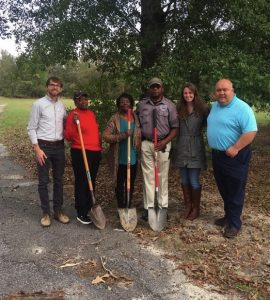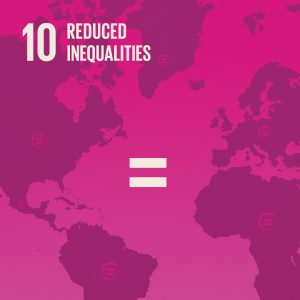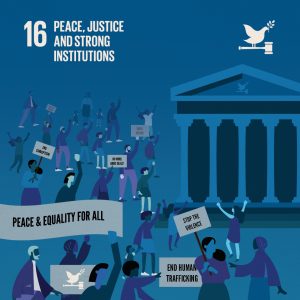The Lee Country Remembrance Project (LCRP) was created to “confront the history of racial terror in Lee County and engage our community in public conversations about the narrative of racial difference and the legacy of racial inequality.” It is a grassroots initiative run in Auburn by Ashley Brown and Olivia Nichols, two doctorate students here at Auburn. Sitting down with Brown and Nichols, it is readily apparent that they have their finger on the pulse of the historicity of racial injustice in the US. They have distinctly different educational and career backgrounds, which helps them to create diverse and holistic perspectives on achieving racial justice. Their work with the LCRP is rooted in their deep knowledge of racial injustice, as well as a fervent desire to see racial equity realized in the United States.
The LCRP was born out of Nichols and her student Monique Naper’s desire to understand more about the lynchings of four black men in Lee County. After visiting the Equal Justice Initiative, a local non-profit organization housed in Montgomery, they researched these events and presented their findings. Nichols and Brown met at the first presentation, and they soon after decided to found the LCRP. As they continued in partnership with one another, they developed a common vision for what this project could be. On this topic, Brown says “[I wanted to] go into the community and share these narratives and also present the community with a charge: now that you know these stories, what are things we can all do together so that stories like these do not continue to exist in our community and at large?” In addition to this, Brown sees this project as an opportunity for her to explore the trauma of racial violence, as well as generational trauma within the Black community. In the same vein as Brown, Nichols understands LCRP to be “a community group trying to confront racial terror and trying to learn and to educate and to share those narratives.” Education is an integral part of the LCRP’s mission, especially education about topics that are difficult to confront. One of the LCRP’s foundational beliefs is that peace and racial unity cannot be present without confrontation of our nation’s history of racial terror and inequality.
In fact, Nichols and Brown argue that historical analysis is an integral part of social justice. “If we better understand the history, then we are confronting and acknowledging these past events that occurred, we can better understand and move forth into present-day and current situations that are happening and say ‘Oh, that directly corresponds to a lynching, sometimes even down to the wording’” says Brown. Here, she is referencing a research topic that Nichols has explored. Nichols analyzed the rhetoric used in newspaper articles that reported lynchings from 1877-1950, and her research has pointed her towards the conclusion that racial terror during the era of lynchings was upheld and maintained by the legal system. In this presentation, she compares a news article discussing the lynching of George Hart, one of the men who was lynched in Lee County, to a news article about the death of Eric Garner. In these two articles, Nichols is able to draw a chilling parallel, highlighting the similarity of how law enforcement reacted to the deaths of these two men. She often presents these findings, showing also how the legal system has evolved over time. To this point, Nichols says “By taking a sober look at this history and learning about the systems which allowed such horrific violence to repeatedly occur, we can see the legacies which have continued today.”

Lee County Remembrance Project volunteers posing with their shovels outside where they’ve been digging.
Brown expands upon this point further, arguing that after digging deep into the historicity of racism and understanding how past systems have evolved into our current reality, then we can really start to understand the generational trauma Black individuals experience. One example she gives of this trauma is how Black/Indigenous people of color’s interactions with police are marked by fear and distrust. Looked at historically, this fear and distrust make perfect sense; after all, the police and legal system have a long history of ignoring vigilante violence and carrying out violence against BIPOC. However, Brown argues that the psychological effects of racism present themselves in a variety of ways. Here, she points to the fact that, due to racist practices enacted throughout our country’s history, BIPOC are more likely to live in poverty. Poverty, Brown argues, has a psychological impact. If an individual does not have reliable access to meet their basic needs, prolonged periods of stress and fear will leave psychological or even traumatic wounds. In this way, the legacy of racism in this nation pervades every sector of life, not only on an interpersonal or systemic level, but also within the individual themselves.
The role of the individual when it comes to confronting our nation’s racist history cannot be overstated, according to Brown. She argues that confronting our personal positions within these racist systems–especially when you come from a position of privilege– is a powerful step towards racial unity and justice. When individuals can admit their role in perpetuating stereotypes, protecting racist systems, or furthering oppression, they allow themselves the opportunity to change. To this point, Brown says, “If we are not confronting what happened, then we are not acknowledging that it occurred. And if we are not acknowledging, then how can we continue to move forward in reconciliation?” Without education on these topics, it is impossible to acknowledge and confront the legacy of racism in America. Luckily, Brown and Nichols say that there seems to be a real drive for the people of Lee County to learn more about the history of racism not only nationally, but right in their own backyard. From this education, Brown is hopeful that the community can foster critical conversations that facilitate growth and healing. “It’s a difficult conversation, but it’s one that we must stop shying away from. When you don’t acknowledge something, it is being treated as if it is non-existing.” Brown explains that refusing to acknowledge the history of racism in America has a high cost for Black communities, sometimes causing them to doubt their own experiences of racism. These conversations, then, become a way to honor the experience of Black people in America, both historically and in our present day.
The LCRP is offering one such way to move towards acknowledgment and reconciliation. On November 5th, the LCRP will host a digital Soil Collection Ceremony, in partnership with the Equal Justice Initiative. EJI has collected soil from the sites of lynchings in the US, charging counties to collect their soil as a symbol of their commitment to acknowledging the history of racial terror in their regions. The LCRP is going to do just that. Brown and Nichols hope that this event can be a place of lament, reflection, and even healing. To attend this event, visit the Lee Country Remembrance Project’s website and click on the link to join virtually.
Post contributed by Chloe McMahon, Program Coordinator, Office of Sustainability
Learn about the SDGs & AU and our contributions related to this post.







